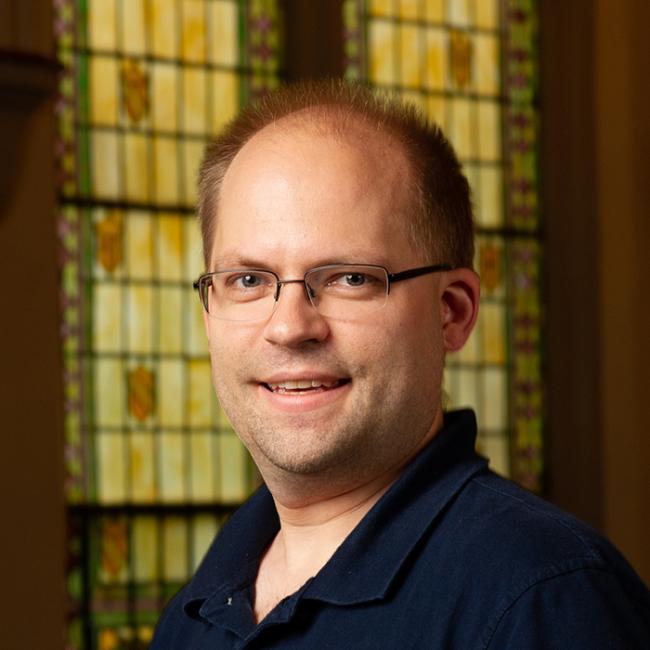Dr. Frank receives $397K grant from National Science Foundation
Physics Professor Dr. Nathan Frank has received a $397,005 Major Research Instrumentation grant from the National Science Foundation. This is part of a collaborative research proposal titled “Development of a Next Generation Fast Neutron Detector” with other members of the MoNA Collaboration.
The name MoNA stands for Modular Neutron Array, which was built by the collaboration in 2003 by primarily undergraduate students from smaller schools such as Augustana.

"This allows Augustana students to learn key technical skills and contribute to nuclear physics research in a meaningful way."
The new grant builds on the success of the collaboration to involve undergraduate students in research over the years, resulting in numerous publications and presentations by students as shown on the collaboration website.
Dr. Frank studies neutron-rich atomic nuclei to understand how protons and neutrons interact inside nuclei. Studying these nuclei helps explain the formation of the elements in the universe and can lead to new scientific applications. Neutron-rich atomic nuclei are very unstable, so unstable that they often emit one or more neutrons in coincidence with a less massive nucleus.
This award will support the development, building and commissioning of a modular array based on a plastic scintillator for the detection of fast (between one-third and one-half the speed of light) neutrons. The new detector array will significantly improve how precisely the neutron's position can be determined compared to current neutron detectors because it will make use of state-of-the-art photo-sensors. As a result, it will enable measuring the nucleus with superior precision.
The detector modules will be built and tested at MoNA’s seven participating undergraduate institutions, including Augustana.
"This allows Augustana students to learn key technical skills and contribute to nuclear physics research in a meaningful way," Dr. Frank said. "Scintillation detectors — detectors that measure the scintillation light that stems from subatomic particles interacting within the detector — are widely employed in research, industry and medical imaging. These skills can be applied in many crucial fields."
For physics/mathematics major Colin Hogan '24, conducting research with Dr. Frank showed him how smaller jobs fit into a much larger and more impactful research project; how actual professional experimental nuclear physicists work together; and how to be thorough and clear in everything he does in the lab, writes in his notes and presents to the public.
"This research assistantship showed me beyond a shadow of a doubt that I want to go to grad school and become a researcher myself," Hogan added. After Augustana, he plans to study nuclear or particle physics in graduate school.
Since arriving at Augustana in 2009, Dr. Frank has involved 24 undergraduate students in nuclear physics, co-authored nearly three dozen publications, and received nearly $1 million from the National Science Foundation to support his research program. Half of the students who have worked with Dr. Frank have gone on to graduate work in physics, engineering or math.
